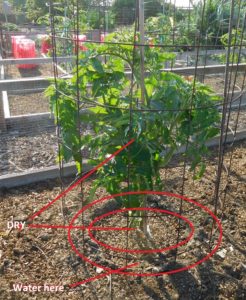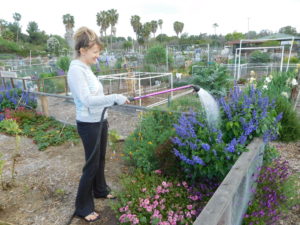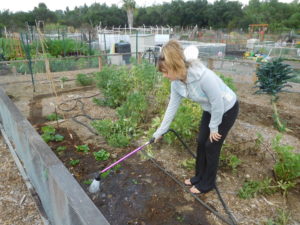
Your goal is to provide water to the roots and to keep the plant leaves and stems as dry as possible. Water is a vector for many diseases such a powdery mildew and other fungi. Water around the drip-line of the plant. For young plants and leafy or root vegetables, it is usually necessary to water the entire plant.
 A watering wand is among the best tools to use. It allows you to put the water close to the ground and reduce splashing. Water in a donut shape pattern around the dripline of each plant allowing the water to absorb into the ground. Give the water some time to
A watering wand is among the best tools to use. It allows you to put the water close to the ground and reduce splashing. Water in a donut shape pattern around the dripline of each plant allowing the water to absorb into the ground. Give the water some time to  percolate down then water again until the soil is moist around the root zone. Do not allow the water to form puddles.
percolate down then water again until the soil is moist around the root zone. Do not allow the water to form puddles.
A fan spray nozzle is also a good tool. It applies water softly but keeping plants dry is more of a challenge.
The best time to water is early in the day which reduces evaporation and allows plants to dry out in the sun. If it is necessary to water late in the day, try to keep as much water off the plant as possible.
Putting the hose on the ground and flooding the garden will waste water and allow soil borne pathogens such as phytophthora to proliferate. For healthy growth, plants should be at the highest places in your plot, not the lowest.
Drip irrigation system and sprinklers are not allowed to be used in the garden. Hand watering is preferable because it allows you to put water only where it is needed.
